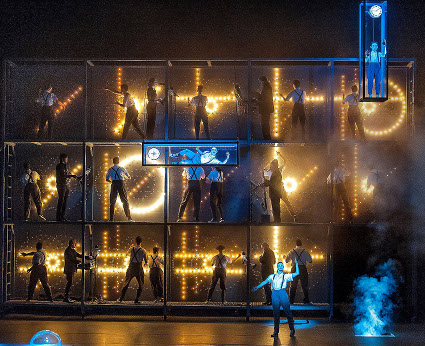Review: Epic ‘Einstein’ revived at BAM

Opera%20Review%20Einstein_Lieb%20%282%29.jpg
A boy holding a luminescent cube tosses paper airplanes from a tower, while beneath him a train repeatedly inches forward across the stage, then retreats.
A woman sits in a high window of a building gesturing with her hands as a crowd gathers outside to the wail of a tenor saxophone.
A chorus, accompanied by a haunting violin solo, sings the numbers from one through eight again and again, so rapidly they begin to sound like nonsense syllables.